As the use of Agile framework is rising, so is the demand for Scrum Masters. However, these Scrum Masters are required to have qualifications for helping the teams perform best. And even though no piece of paper could be a substitute for real-world experience. But, it can demonstrate to your employers that you have been active in Agile education.
If you already have worked with Scrum and understand the role of a Scrum Master, you can directly go for the Scrum Master certification. If not, you have to go through a quick rundown of Scrum to get an idea of the different CSM certifications that exist today:
Who is a Scrum master? Why do organizations need them?
Scrum is a popular framework used for software development. It is known for describing the desired outcome that supports continuous and incremental product improvement. It also offers the planning and team structure guidelines that are suited for handling the tasks. However, there is no hierarchy of titles in the Scrum methodology. Everyone is responsible for regulating their workflow. The whole team has to work together for completing the sprint as well and as fast as possible. After the end of every sprint (that can be one to four weeks of the working period), the team will see incremental improvements.
Why should you get a Scrum Master certification?
Scrum Master certifications were not a thing 20 years ago. These have been created in response to the needs of the people who want to work as a Scrum Master. As mentioned above, certifications can help put you on the map for employers who have to look through dozens of applications. Here are a few reasons why people often go for the Scrum Master certification:
- The CSM training ensures that your resume doesn’t end up in the ‘No’ pile.
- It is best for professionals who have management experience and want to enter the field of software development.
- You have been practising agile, scrum, or kanban for years and have some knowledge gaps. This is where the CSM certification can help you.
- You have completed the foundational Scrum training and want to move on to advanced level training.
A certification will help you create a better position for yourself in the Scrum community. Thanks to the Scrum Alliance membership, you can meet with fellow scrum experts from all around the globe and exchange ideas.
Steps to CSM Certification
When you are working on an Agile project that uses the Scrum framework, one of the primary roles is that of the Scrum Master. They are the key facilitators of the project who are responsible for improving team interactions, arranging daily meetings, maximizing productivity, removing roadblocks, and supporting the team. Here is how you can become a Scrum master in these simple 7 steps:
- Learn the Scrum’s basics
Before you start your journey of becoming a Scrum Master, you have to get yourself familiarized with the principles and values of Agile and the Scrum framework. Apart from the resources you get from your training institute, you have to read the Scrum Guide and check out the Agile manifesto. It will make you more familiar with the basic concepts, beliefs, and practices of Scrum.
- Select your Scrum certification
If you are on your journey to becoming a Scrum Master, the best way to go through this is by a recognized certification program. The CSM certification will ensure that you are familiar with Scrum, Agile, and the roles and requirements of a Scrum master. Also, obtaining the certification will demonstrate that you have the knowledge and skills of the field. It will also open up new opportunities for you. Once you are done with the CSM, there are other Scrum master certifications that you can go for.
- Attend the Scrum training course
Once you have selected the certification path for you, you have to get yourself enrolled in an officially recognized training institute. The CSM certification has some requirements and the training course is a part of it.
- Register yourself for the exam
After you have completed the required amount of hours, you will be ready for taking the exam. You will be able to prove that you have the required knowledge for becoming a Scrum Master. It is advised that you take the exam soon after completing the course. This way, you will be able to retain the most information that you learned during the course. You have to take the exam within 90 days. If you don’t pass the exam in the first attempt, you can get the second attempt for free. A small fee will be charged for another attempt.
- Study for the exam
No matter how well you have studied during the course, you have to go over your notes and study up to the exam day. You also should watch scrum webinars and go through additional Scrum resource materials that can ensure that you are completely prepared for the exam. The exam will focus on the principles and practices of Scrum. It includes project management, sprints, team building, progress reporting, scalability, and release planning. However, the exam might also include questions about the history, evolution, and philosophy of the Scrum framework.
- Take the exam and pass it
The CSM exam will be a multiple-choice question exam. You will have to answer 37 questions out of 50. The exam will be an hour long. Also, you will get the result within minutes of finishing the exam. You will get a link to download your certificate along with 2-year access to the Scrum Alliance membership. This way, you will become a Scrum Master.
- Renew certifications after every 2 years
CSM certification will expire every two years. So, if you want to become a recognized Scrum master, you have to renew the certification. You will also be paying a fee for renewing your CSM certification.
There are no traditional titles in Scrum methodology. However, there are certain assigned roles, each of which has its own responsibility – the product owner, the scrum master, and the development team. The Product Owner is the one who prioritizes the development tasks. The Scrum Master is the one responsible for making sure that all the tasks are realistic. Lastly, the development team will be figuring out how to deliver the tasks. If some problems appear or the improvements don’t happen, the Scrum Master will take a lead role in figuring out what the team’s next move will be.



